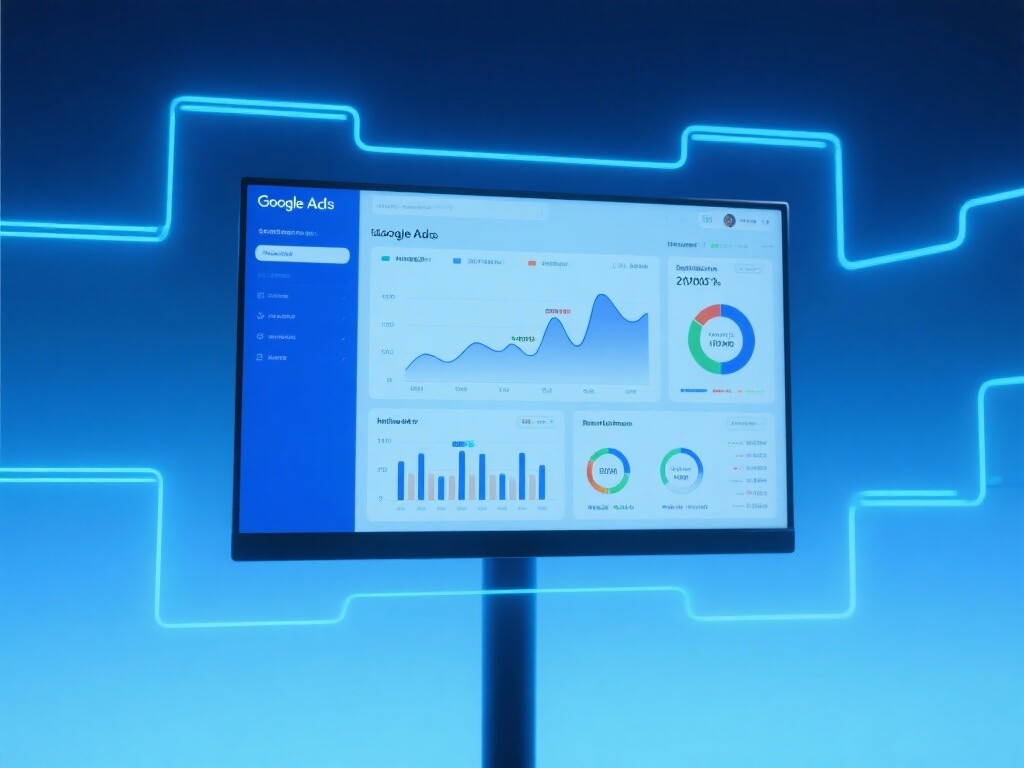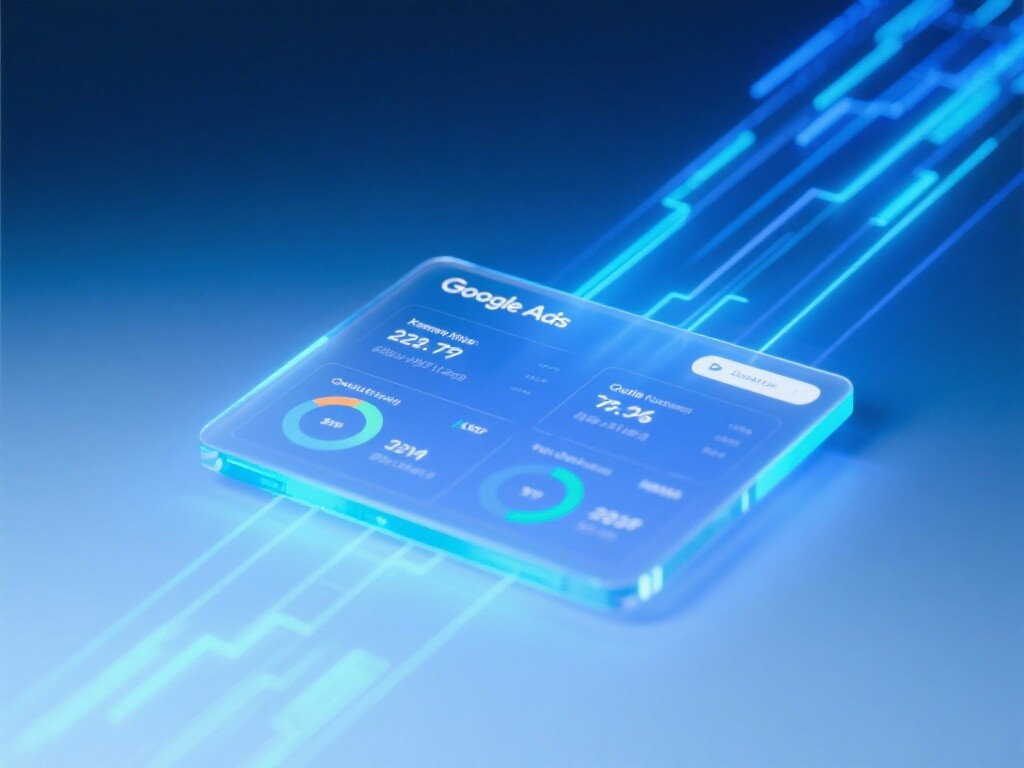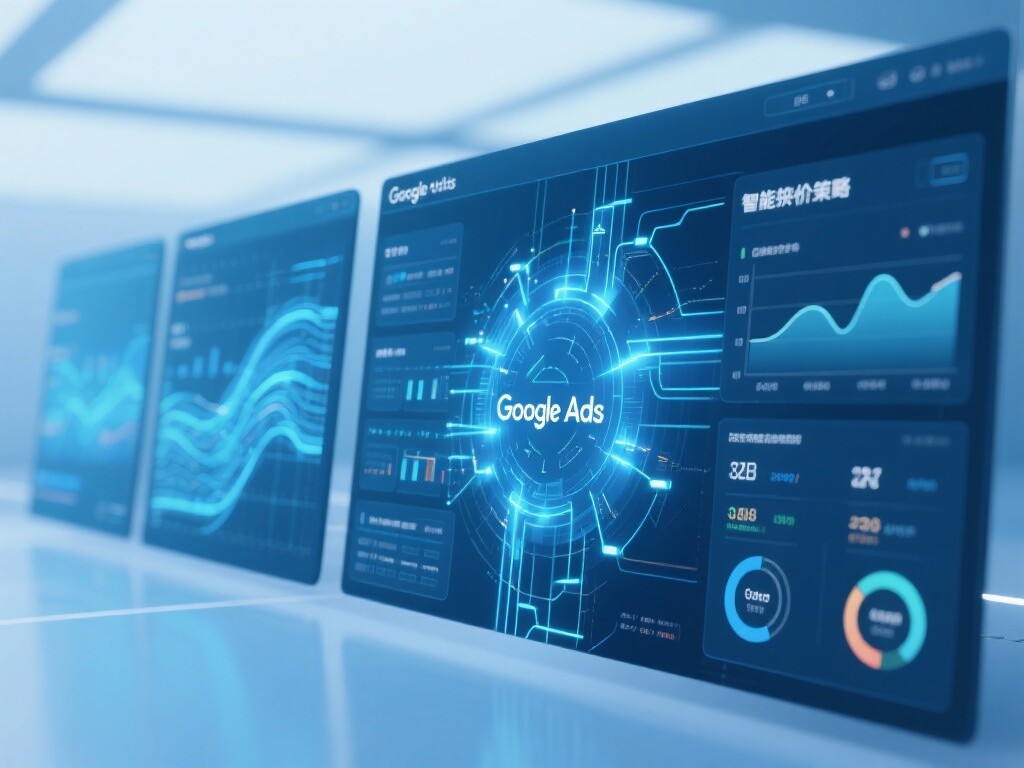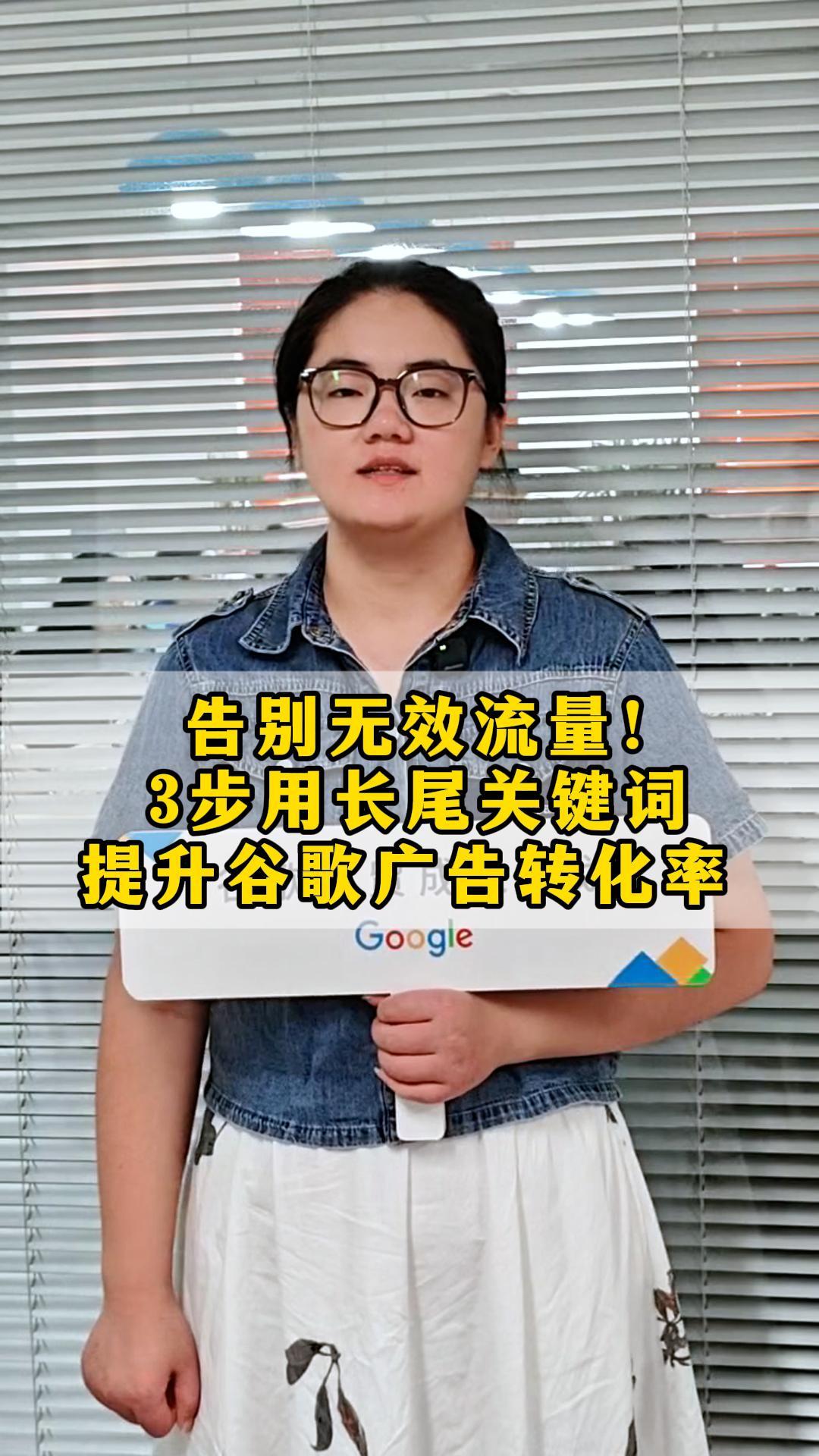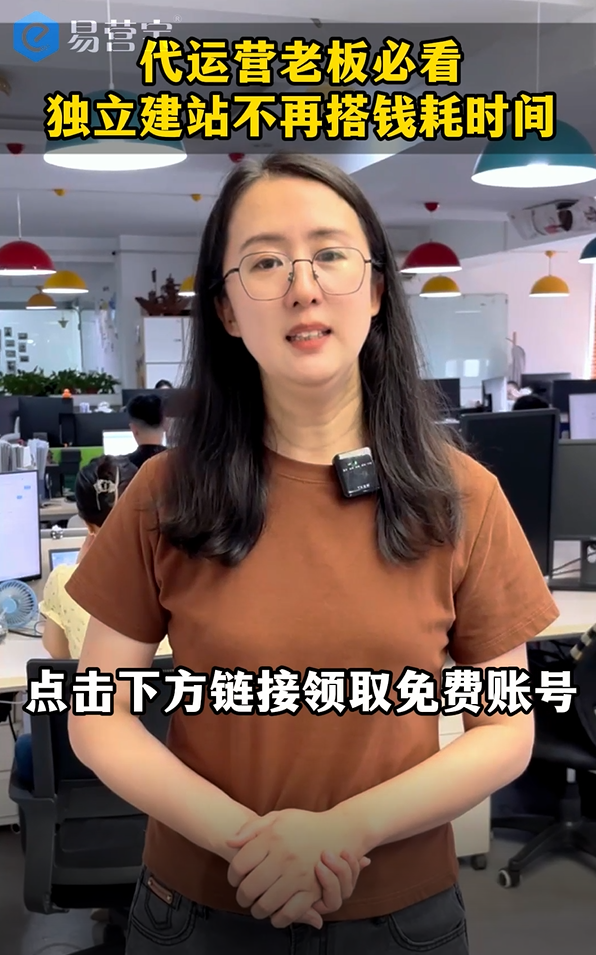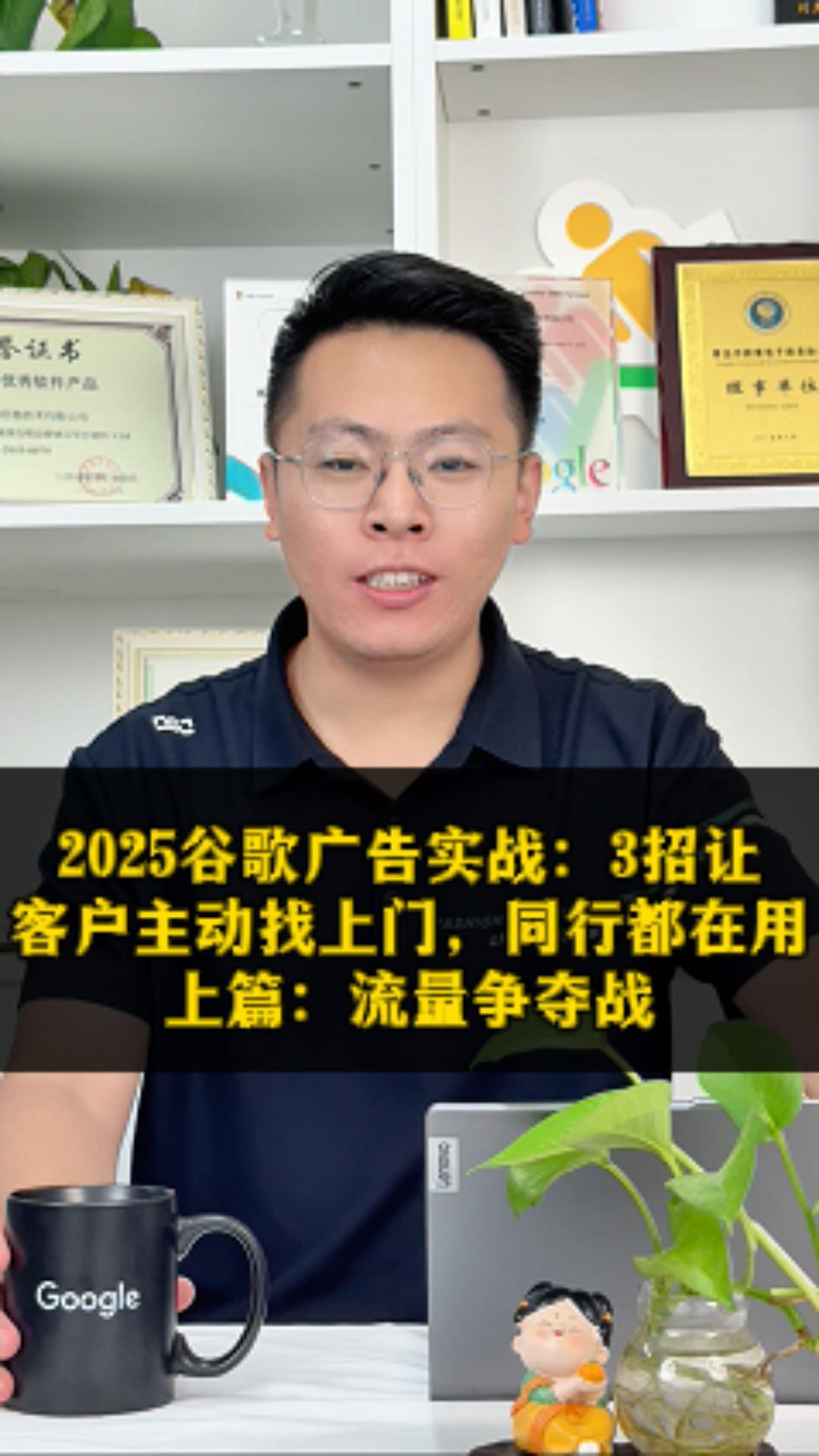Easy Camp Cloud Intelligent Website Construction and Marketing System Platform!
Google Ads is defined as an intent-driven digital marketing platform.
Google Ads , formerly known as Google AdWords, is an online advertising platform provided by Google. It allows businesses to pay to display their products and services information across Google's vast network, thereby delivering ads to potential customers.
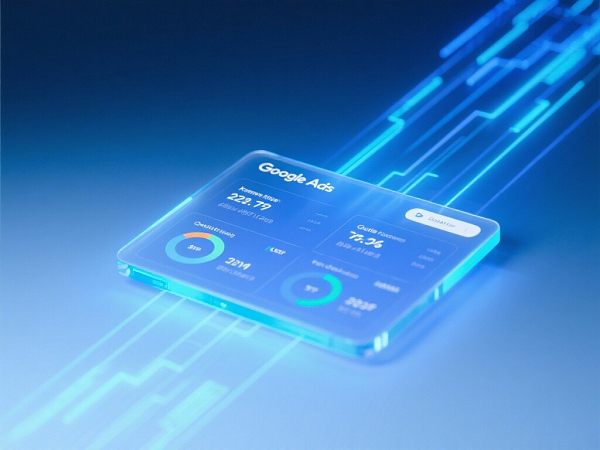
The core value of Google Ads lies in its **"intent-driven" nature.** Unlike traditional advertising (such as television and outdoor advertising) which passively pushes information to the audience, Google Ads is primarily based on users' search behavior, interests, geographic location, and viewing history to ensure that ads only appear when users express a clear need or interest.
Google Ads' core objective:
Precise targeting: Displaying highly relevant ads when users perform specific searches or browse specific content.
Measurability: Provides detailed reports and analytics tools to accurately measure the return on investment (ROI) for every click, impression, and conversion.
Efficiency and Scalability: Manage large-scale advertising campaigns with maximum efficiency using automated tools and intelligent bidding strategies.
The history of Google Ads: From keyword bidding to AI automation
The history of Google Ads is a microcosm of the advancements in digital marketing technology and algorithms over the past two decades:
1. The Birth of AdWords and the Era of Keyword Bidding (2000-2005):
2000: Google officially launched Google AdWords . The initial system was based on a monthly payment model.
2002: The cost-per-click (CPC) bidding model was introduced. Advertisers bid on keywords, which were then displayed on the right side of the search results page. This model quickly became mainstream, laying the foundation for modern search marketing.
2. Quality Score and Network Expansion (2005-2015):
The Quality Score was introduced: Google realized that relying solely on bid volume to determine rankings would lead to a decline in user experience. Therefore, the Quality Score mechanism was introduced. Ad ranking depends not only on bid, but also on ad relevance, landing page experience , and expected click-through rate .
Google Display Network (GDN) Expansion: Google Ads is no longer limited to search results pages. Through acquisitions and partnerships, it has expanded its advertising network to millions of websites, YouTube, Gmail, and more, forming a vast Google Display Network .
3. The Era of Machine Learning and Automation (2016-2023):
Smart Bidding: Introduces automated bidding strategies based on machine learning, such as target cost per conversion (tCPA) and target return on ad spend (tROAS) . The system begins analyzing billions of data points in real time and automatically adjusts bids.
The rise of Responsive Ads: The widespread adoption of Responsive Search Ads (RSA) and Responsive Display Ads (RDA) allows AI to automatically optimize ad copy and creatives based on different users' devices and contexts.
4. Performance Max and AI-Driven (2023 to present):
Renamed Google Ads: Officially changed from AdWords to Google Ads, emphasizing its comprehensive advertising ecosystem and brand attributes.
Performance Max (PMax) campaign launched: This marks the pinnacle of Google Ads' AI automation trend. PMax allows advertisers to provide creative packages to AI, which automatically determines the optimal delivery across all Google Ads networks to maximize conversions.
The technical principles of Google Ads: Quality Score and Ad Bidding Mechanism
Understanding the underlying technology of Google Ads is key to achieving efficient ad delivery and reducing costs.
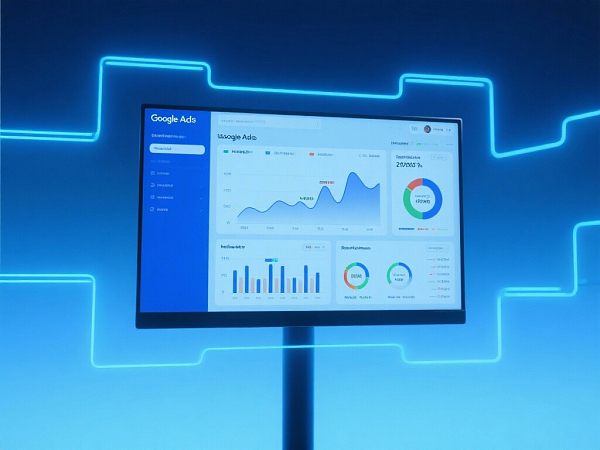
1. Ad ranking mechanism: Bid * Quality Score
Google Ad Rank is not simply determined by who pays the highest bidder; it is determined by the following formula:
Quality Score: This is a comprehensive score (1-10) Google gives to your ads, keywords, and landing pages on their relevance and usefulness . The higher the score, the greater your chance of achieving a higher ranking with a lower bid.
Cost-per-click (CPC Bid): The maximum amount you are willing to pay for a single click.
Additional information in advertising, such as phone numbers, additional links, and structured summaries, has a positive impact on user experience and ad visibility.
2. The three core elements of quality score
Quality Score is the "lifeline" of Google Ads, and it consists of the following three elements:
Expected CTR: Google predicts the likelihood that a user will click on your ad. This is the most important factor.
Ad Relevance: How relevant your ad copy is to the keywords users search for.
Landing Page Experience: Is your landing page content highly relevant to the ads? Is it easy to navigate? Does it load quickly?
3. Smart Bidding and Machine Learning
Google's Smart Bidding strategy is based on machine learning , and its principle is as follows:
Real-time bidding: The system analyzes billions of data points (user location, device, time, historical behavior, etc.) in real time for each search.
Predicted conversion rate: AI predicts the likelihood of a conversion from this click.
Dynamic adjustment: If the AI predicts a high conversion rate for the click, the system will increase the bid in real time ; if the conversion rate is low, the bid will be reduced , thereby achieving the target CPA or ROAS at the lowest cost.
Google Ads' technical features and five core networks
Google Ads is powerful because of its reach and diversity of delivery. It consists of five core ad networks, each targeting different user intents and marketing stages:
1. Search Network
Features: Text ads targeted by keywords , appearing on Google search results pages, Google Maps, etc.
Application: Captures users' explicit, immediate needs and purchase intentions , suitable for direct conversions and emergency services.
Core tools: Keyword Planner and Responsive Search Advertising (RSA) .
2. Display Network (GDN)
Features: Covers millions of websites, applications, and Google's own platforms worldwide, displayed in the form of images, videos, and banners .
Applications: Building brand awareness, conducting remarketing , and displaying ads to target interest groups (such as travel enthusiasts and tech users).
Core tools: Targeting options (interests, topics, custom intent audiences).
3. Shopping Ads
Features: Designed specifically for e-commerce, it directly displays product images, prices, and merchant names on the search results page.
Application: Facilitating direct sales of e-commerce products is the preferred choice for high-intent buyers .
Core tool: Google Merchant Center (GM C**)**.
4. Video Ads (YouTube)
Features: Ads placed on the YouTube platform and Google Video partners, including Skippable/Non-Skippable In-Stream ads , Bumper Ads, etc.
Applications: Building brand stories, achieving large-scale coverage, and targeting users' interests or viewing habits for precise advertising.
5. App advertising and discovery advertising
App Campaigns: Automatically promote your app across all platforms, including Google Play, Search, and YouTube, to get more installs.
Discovery Ads: Display ads in native, engaging visual formats in Gmail, YouTube Feed, and Google Discover to spark new user interest and potential needs.
Google Ads Deep Application Strategy: From Awareness to Conversion
An effective Google Ads strategy needs to cover all stages of the marketing funnel and leverage its technological advantages to achieve synergies.
1. Top of the marketing funnel: Brand awareness and interest generation
Strategy: Utilize YouTube video ads (such as Bumper Ads) and GDN interest targeting to reach potential customers at a low cost and on a large scale, and build brand recall.
Tools: Use custom target audiences to target users who are searching for competitors or related topics.
2. Mid-stage of the marketing funnel: Demand capture and competitive advantage
Strategy: Search ads focus on core, high-intent keywords , ensuring they appear immediately when users search. Simultaneously, leverage competitor keywords to capture traffic from rivals.
Tools: Focus on **Maximize Conversions** smart bidding strategy.
3. The bottom of the marketing funnel: precise conversion and remarketing
Strategy: Remarketing . Target users who have visited the website and added items to their cart but haven't made a purchase, using GDN and YouTube to display customized, urgency-based ads (such as limited-time discounts) to drive final conversions.
Tool: Dynamic Remarketing , which shows users the specific products they have viewed.
4. Automation Strategy: Maximizing ROI
Performance Max (PMax): Integrate all creative assets, audience signals, and conversion goals into a single campaign, allowing AI to autonomously find the best conversion opportunities across all networks. This is the ultimate strategy for maximizing efficiency .
EasyCreative: Your Google Ads Certified Expert
E-Creative not only possesses Google Ads certification but also boasts advanced SEO and data analytics capabilities. Our services go beyond simple account management; we position Google Ads as a core driver of brand growth strategies .
Scientific budget allocation: Based on data analysis, accurately allocate the budget to the advertising networks, regions, and keyword combinations with the highest conversion rates.
Quality Score Optimization: Deeply optimize ad copy, keyword structure, and target landing pages to improve quality scores and achieve higher rankings at a lower cost.
Smart Bidding and ROI Enhancement: Set and monitor complex conversion goals, and use smart bidding strategies to achieve target CPA or tROAS , ensuring that every penny spent on advertising delivers the highest return on investment.
PMax and AI Empowerment: Helping businesses build high-quality PMax asset portfolios, providing precise audience signals , and fully leveraging the marketing potential of Google AI.
EasyPro is dedicated to making your Google Ads account a highly efficient, transparent, and predictable money-making machine.
FAQ
1. Is Google Ads' "Quality Score" really that important? Can't I just solve the problem by bidding higher?
Quality Score is absolutely critical. Google's mechanism is designed to reward advertisers who provide high-quality, highly relevant ads. While higher bids can indeed secure impressions, if your Quality Score is low, you may end up paying several times the CPC of your competitors just to maintain rankings. A high Quality Score can significantly reduce your actual CPC and improve ad rankings, making it key to achieving long-term low-cost, high-conversion performance.
2. How should budgets be allocated between Search Ads and Display Ads (GDN)?
This depends on your marketing objectives:
For direct conversions and sales: Allocate 60%-80% of budgets primarily to Search Ads and Shopping Ads, as they capture users with clear purchase intent.
For brand awareness or remarketing: Allocate budgets to GDN and YouTube. GDN excels at low-cost, large-scale brand building and remarketing. We recommend reserving at least 20%-40% of budgets for brand-building and remarketing to support Search Ads' conversion performance.
3. Will Performance Max (PMax) campaigns replace traditional Search Ads?
PMax won't completely replace Search Ads, but it represents the future trend. PMax's strength lies in AI-driven full-funnel conversion maximization, especially for businesses with clear conversion goals. However, traditional Standard Search Ads provide complete control over keywords, negative keywords, and ad copy, remaining indispensable for highly regulated industries or those targeting specific long-tail intent. We recommend running both: PMax for scaled conversions, and Standard Search for strategic keyword precision control.
4. How crucial is Landing Page design for Google Ads performance?
Extremely crucial. Landing page experience is a key factor determining Quality Score. If users click your ad but encounter slow-loading pages, irrelevant content, or poor usability, Google will penalize your Quality Score, increasing your costs. More critically, poor landing pages strangle conversion rates—even with high click volume, it's wasted spend.
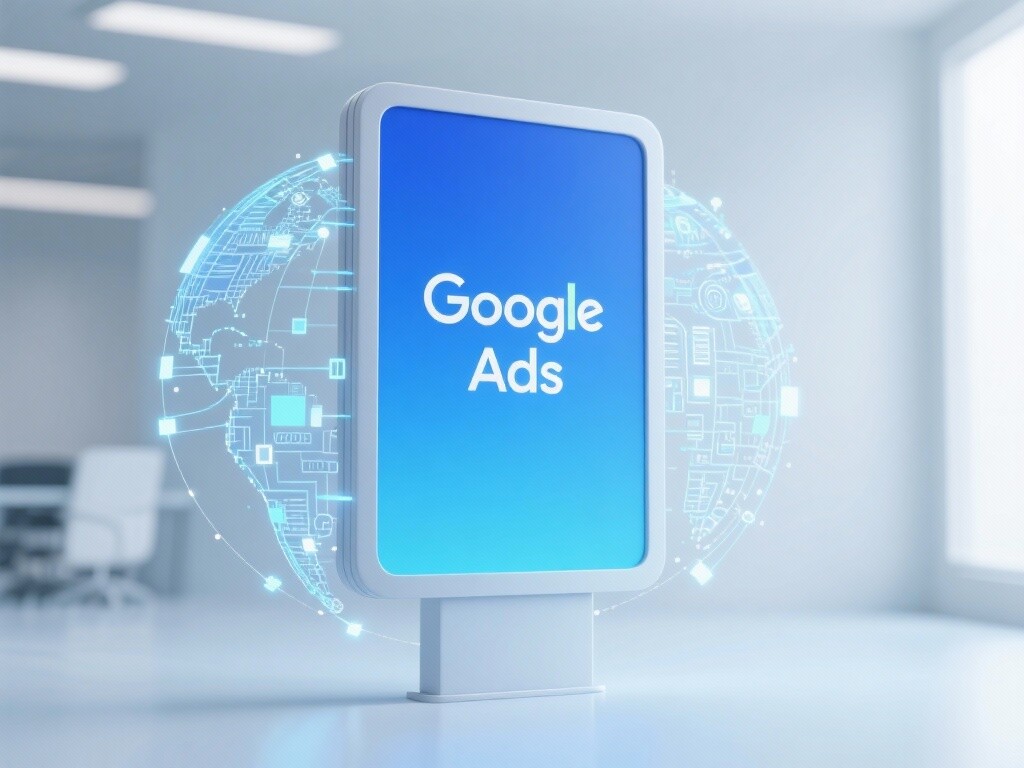
Customer Reviews
Mr. Zhang, CMO of a SaaS technology company
"Our Google Ads account previously had unstable ROI with high costs. After EasyProfit took over, they completely restructured our keyword framework with focus on Quality Score optimization and smart bidding. Within three months, our average CPC dropped 35%, target CPA stabilized within expected ranges, and account conversions doubled. Their professional data analysis and strategic guidance truly enabled data-driven growth."
Ms. Li, CEO of a cross-border travel e-commerce platform
"Our biggest challenge was cross-border remarketing and multilingual ad deployment. EasyProfit designed a complete PMax asset group and audience signal strategy combined with YouTube placements. Results were immediate—our dynamic remarketing ads achieved 40% higher conversion rates. Google Ads has now become our primary channel for high-value international orders—their expertise and performance delivery are incredibly reliable."
 Say goodbye to invalid traffic! 3 steps to boost Google Ads conversion with long-tail keywordsLearn how to accurately select long-tail keywords in 3 steps to effectively improve Google Ads conversion. Eliminate invalid traffic with case studies like 'anti-slip yoga mats' to reduce ad costs and increase ROI.
Say goodbye to invalid traffic! 3 steps to boost Google Ads conversion with long-tail keywordsLearn how to accurately select long-tail keywords in 3 steps to effectively improve Google Ads conversion. Eliminate invalid traffic with case studies like 'anti-slip yoga mats' to reduce ad costs and increase ROI. 5 Steps to Lock in B2B Clients! Is Your Google Ads Burning Money?Learn 5 Steps to Efficiently Run Google Ads and Precisely Target B2B Clients! From keyword selection to budget layering, avoid wasteful spending and boost conversions. Ideal for manufacturing B2B enterprises.
5 Steps to Lock in B2B Clients! Is Your Google Ads Burning Money?Learn 5 Steps to Efficiently Run Google Ads and Precisely Target B2B Clients! From keyword selection to budget layering, avoid wasteful spending and boost conversions. Ideal for manufacturing B2B enterprises. A must-read for service provider CEOs: Build independent websites without wasting time and money!A must-read for service provider CEOs: Build independent websites without wasting time and money!
A must-read for service provider CEOs: Build independent websites without wasting time and money!A must-read for service provider CEOs: Build independent websites without wasting time and money! 2025 Google ads in practice: 3 strokes to let customers actively seek the door, peers are using the previous articleUncover the 2025 Google Ads real-world techniques, 3 tricks to teach you accurate customer acquisition and say goodbye to invalid traffic. Learn the customs data screening, targeting ROAS strategies and geo-fencing techniques that your peers are using to get customers to come to you!
2025 Google ads in practice: 3 strokes to let customers actively seek the door, peers are using the previous articleUncover the 2025 Google Ads real-world techniques, 3 tricks to teach you accurate customer acquisition and say goodbye to invalid traffic. Learn the customs data screening, targeting ROAS strategies and geo-fencing techniques that your peers are using to get customers to come to you!

